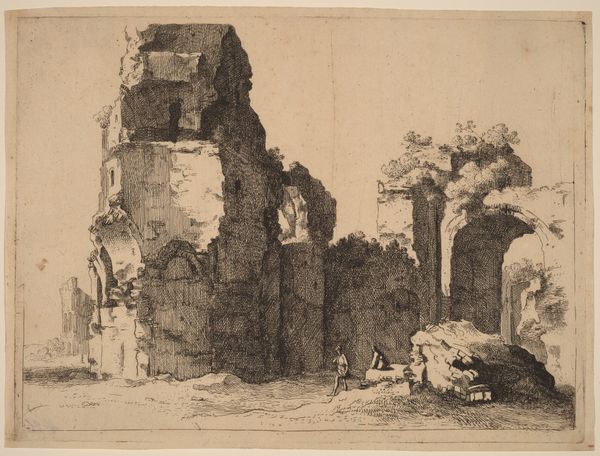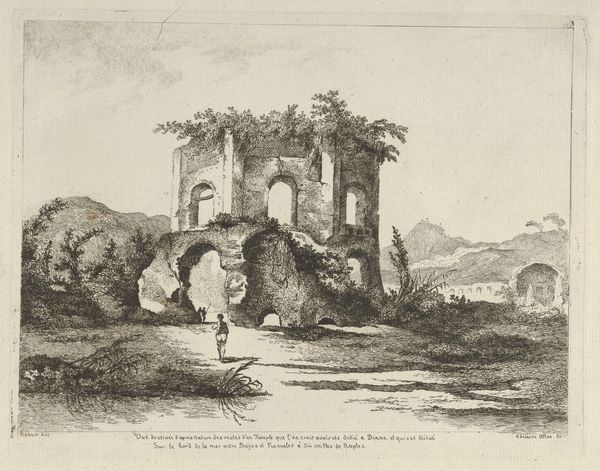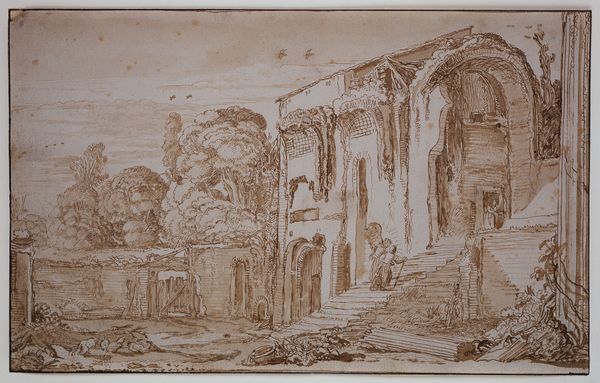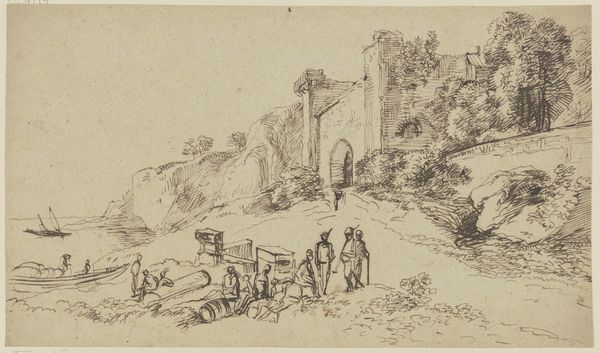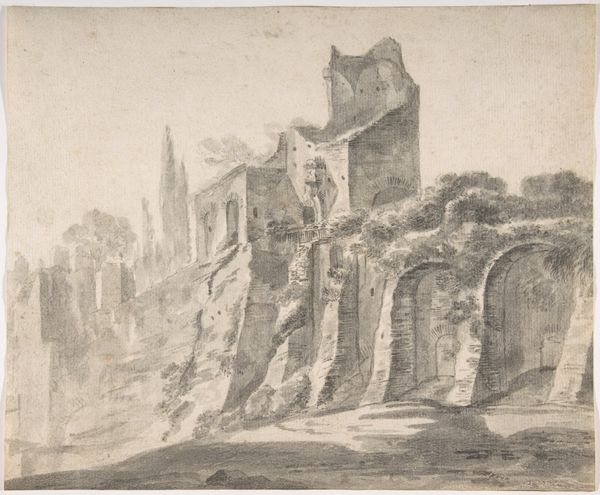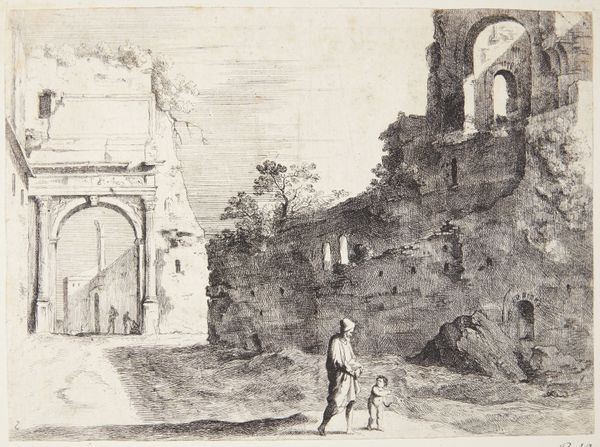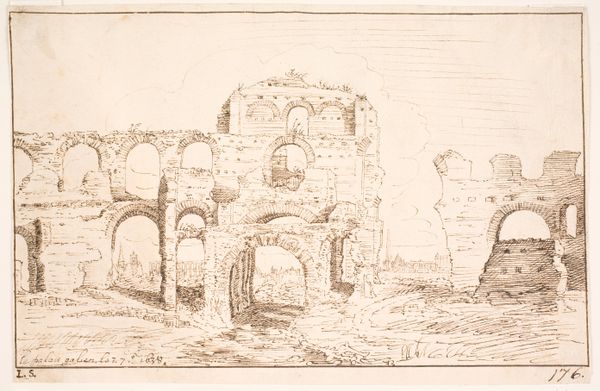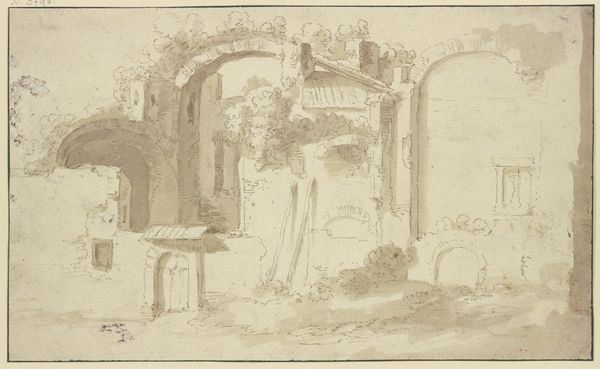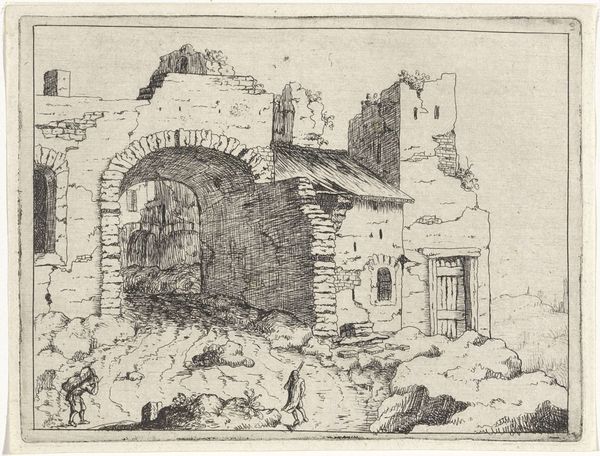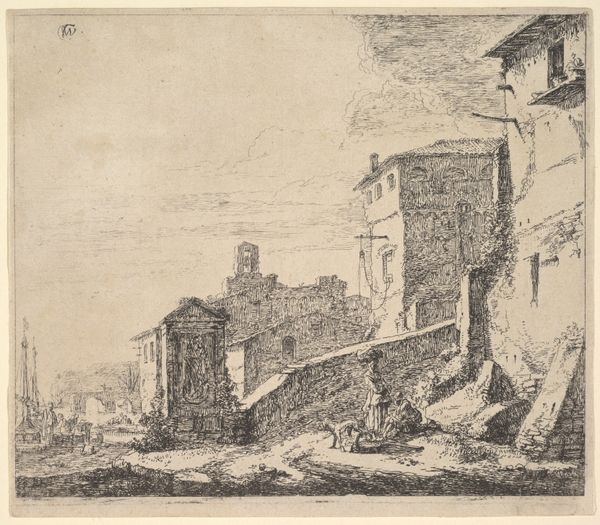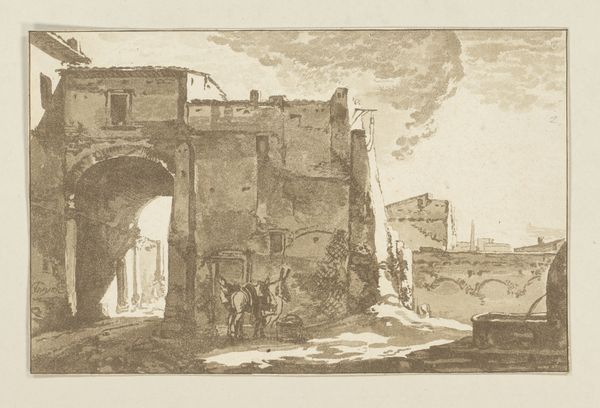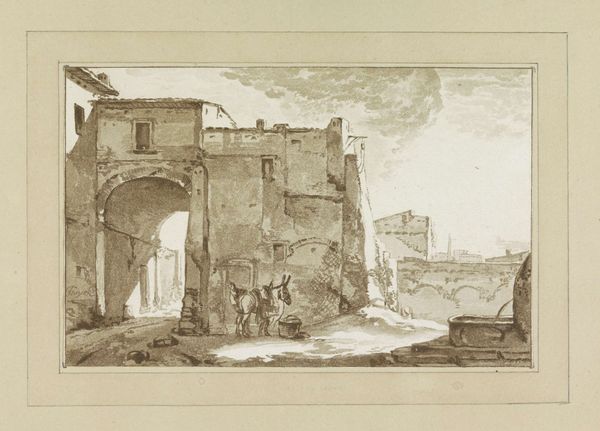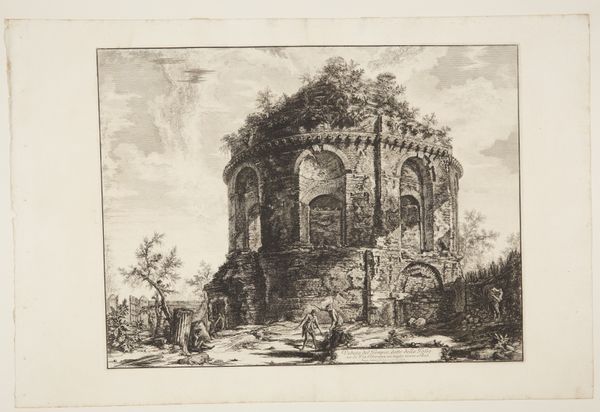
drawing, print, etching, intaglio, architecture
#
drawing
#
baroque
# print
#
etching
#
intaglio
#
landscape
#
architecture
Dimensions: 385 mm (height) x 397 mm (width) (bladmaal)
Editor: So this is "Saint Cecilia and Angels" by Schelte Adamsz. Bolswert, dating from 1635 to 1642. It's an etching. I’m immediately struck by the contrast between the delicate lines and the crumbling architecture. What symbols or deeper meanings do you see in this artwork? Curator: This ruin becomes a stage, charged with symbolic weight. The broken columns evoke a sense of time's relentless march, a common memento mori of the Baroque. But within those ruins, new life—flora—emerges. Does that dichotomy resonate with you? Editor: Yes, definitely! The ruin feels melancholic, but the plants give a sense of hope or resilience. Is Saint Cecilia always portrayed among classical ruins? Curator: Not necessarily always ruins, but often within spaces carrying echoes of earlier cultures, connecting past with present faith. Look at how the very fine lines describing foliage intermingle with architecture's heavy outlines. Editor: It’s interesting how those distinct textures, stone and leaves, create a unified image despite the ruinous state. Curator: Indeed. The etching highlights how culture remembers and reimagines. How does seeing that architectural space interact with this story, of the musical saint, makes you feel? Editor: It adds a layer of reverence for history, linking artistic and religious traditions together, it also highlights fragility of cultural achievements, both architectural and creative. Curator: Precisely! An understanding of cultural memory shows how forms resonate across centuries, echoing themes of decay and renewal, spirituality and earthly existence. Editor: This discussion helped me see how prints are vehicles for complex concepts beyond their literal depiction. Curator: Likewise, I always appreciate fresh interpretations of historical pieces.
Comments
No comments
Be the first to comment and join the conversation on the ultimate creative platform.
